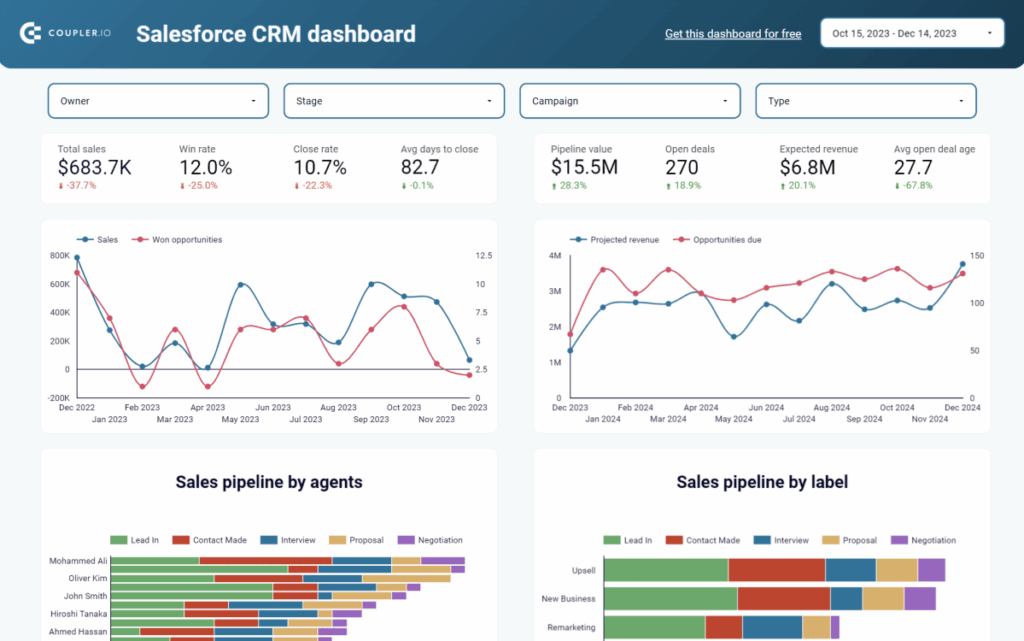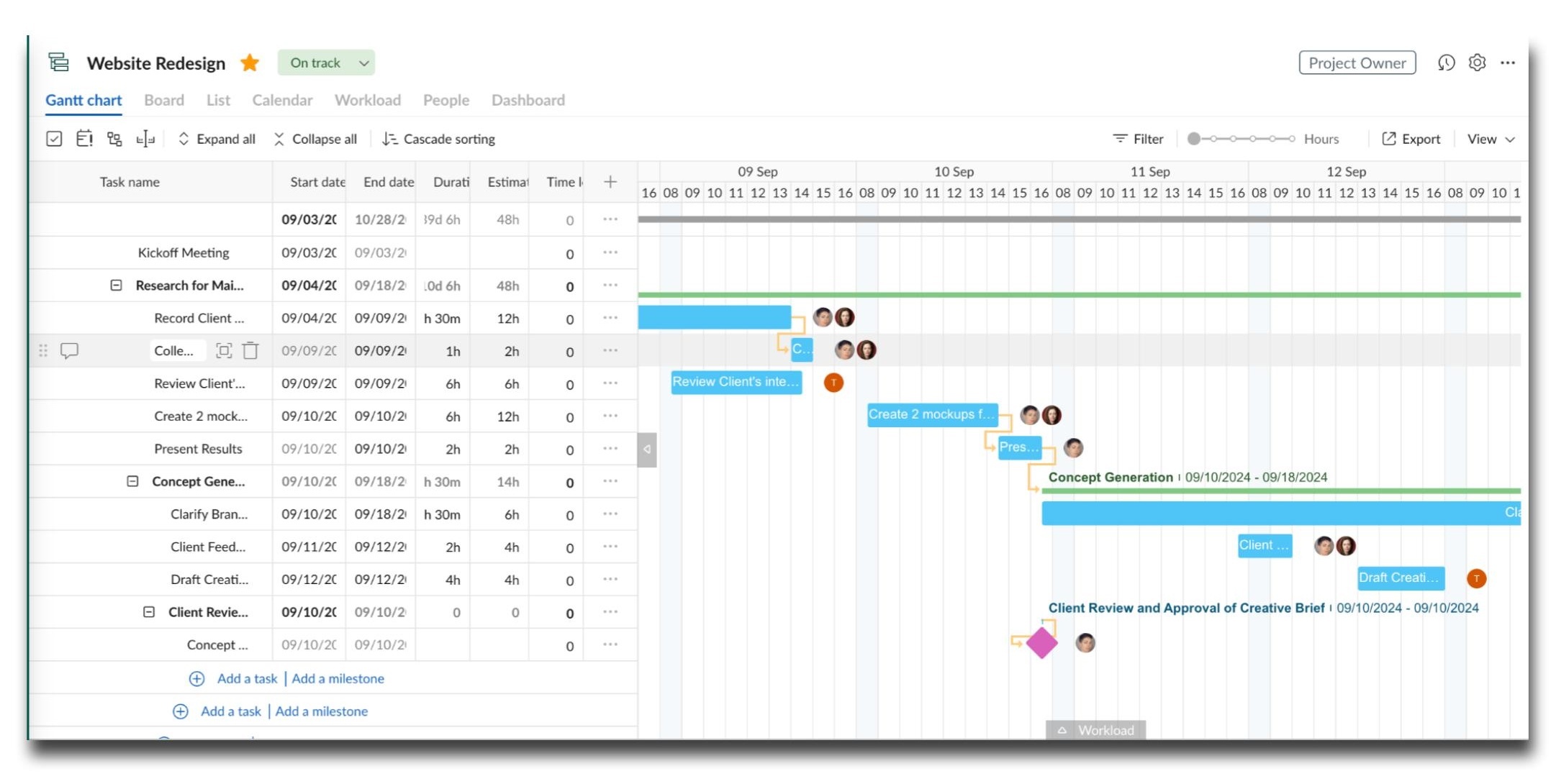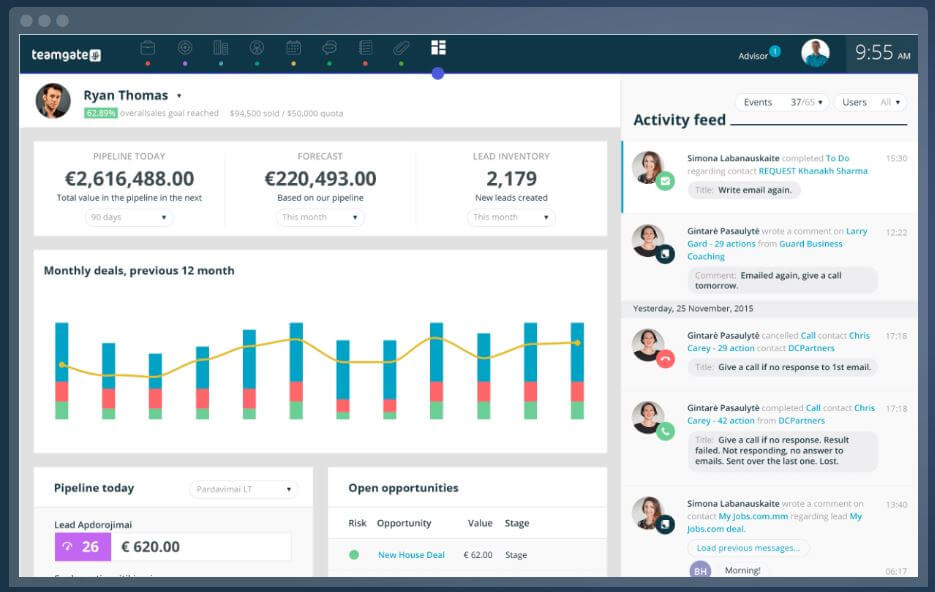
Mastering the CRM Marketing Dashboard: Your Ultimate Guide to Data-Driven Growth
In today’s hyper-competitive business landscape, data is the new gold. But raw data is useless unless you know how to extract insights and turn them into actionable strategies. That’s where the CRM marketing dashboard comes in. It’s your mission control center, your cockpit, your window into the soul of your marketing efforts. This comprehensive guide will walk you through everything you need to know about CRM marketing dashboards, from the basics to advanced strategies, helping you unlock the power of data and drive sustainable growth.
What is a CRM Marketing Dashboard?
At its core, a CRM marketing dashboard is a visual representation of your key marketing metrics, pulled directly from your Customer Relationship Management (CRM) system. Think of it as a single pane of glass that gives you a real-time, holistic view of your marketing performance. Instead of sifting through spreadsheets and reports, a well-designed dashboard presents the most critical data points in an easily digestible format, allowing you to quickly identify trends, spot opportunities, and address potential issues.
A CRM marketing dashboard is more than just a pretty interface. It’s a strategic tool that empowers marketers to make data-driven decisions. By monitoring key performance indicators (KPIs) such as lead generation, conversion rates, customer acquisition cost (CAC), and return on investment (ROI), you can gain valuable insights into the effectiveness of your campaigns, optimize your marketing spend, and ultimately improve your bottom line.
Why is a CRM Marketing Dashboard Important?
In a world awash in data, a CRM marketing dashboard offers several crucial benefits:
- Improved Decision-Making: By providing a centralized view of your marketing performance, dashboards enable faster and more informed decision-making. You can quickly identify what’s working, what’s not, and adjust your strategies accordingly.
- Enhanced Efficiency: Dashboards automate the process of data collection and reporting, saving you valuable time and resources. You no longer have to manually compile data from various sources; the dashboard does it for you.
- Increased Transparency: Dashboards promote transparency by making key performance indicators (KPIs) visible to the entire marketing team and even other stakeholders. This fosters collaboration and accountability.
- Better ROI: By tracking and analyzing marketing performance, dashboards help you optimize your campaigns and allocate your budget more effectively, leading to a higher return on investment (ROI).
- Faster Problem Identification: Dashboards allow you to quickly identify potential issues, such as declining conversion rates or rising customer acquisition costs, enabling you to take corrective action before they escalate.
Key Components of a CRM Marketing Dashboard
A well-designed CRM marketing dashboard should include a variety of key components to provide a comprehensive view of your marketing performance. Here are some of the most important elements:
1. Lead Generation Metrics
Lead generation is the lifeblood of any marketing campaign. Your dashboard should track key metrics related to lead generation, such as:
- Number of Leads Generated: The total number of leads generated over a specific period.
- Lead Sources: Breakdown of leads by source (e.g., website, social media, email campaigns).
- Lead Conversion Rate: The percentage of leads that convert into qualified leads or customers.
- Cost Per Lead (CPL): The cost associated with generating each lead.
2. Website Analytics
Your website is often the first point of contact for potential customers. Your dashboard should include website analytics such as:
- Website Traffic: The number of visitors to your website.
- Bounce Rate: The percentage of visitors who leave your website after viewing only one page.
- Pages per Session: The average number of pages viewed per visit.
- Conversion Rate: The percentage of website visitors who complete a desired action (e.g., filling out a form, making a purchase).
3. Campaign Performance
Tracking the performance of your marketing campaigns is crucial for optimization. Your dashboard should include metrics such as:
- Campaign Reach: The number of people exposed to your campaign.
- Click-Through Rate (CTR): The percentage of people who click on your ads or links.
- Conversion Rate: The percentage of people who complete a desired action after clicking on your ads or links.
- Cost Per Acquisition (CPA): The cost associated with acquiring a customer through a specific campaign.
- Return on Ad Spend (ROAS): The revenue generated for every dollar spent on advertising.
4. Sales Performance
Ultimately, the goal of marketing is to drive sales. Your dashboard should include metrics related to sales performance, such as:
- Sales Revenue: The total revenue generated over a specific period.
- Number of Sales: The total number of sales made.
- Average Deal Size: The average value of each sale.
- Conversion Rate: The percentage of leads that convert into paying customers.
- Customer Lifetime Value (CLTV): The predicted revenue a customer will generate over their relationship with your business.
5. Customer Engagement
Engaged customers are more likely to become loyal customers. Your dashboard should include metrics related to customer engagement, such as:
- Customer Retention Rate: The percentage of customers who remain customers over a specific period.
- Customer Churn Rate: The percentage of customers who stop doing business with you.
- Customer Satisfaction Score (CSAT): A measure of customer satisfaction.
- Net Promoter Score (NPS): A measure of customer loyalty.
- Social Media Engagement: Metrics related to engagement on social media platforms (e.g., likes, shares, comments).
Building Your CRM Marketing Dashboard: A Step-by-Step Guide
Creating a CRM marketing dashboard might seem daunting, but with a structured approach, you can build a powerful tool that transforms your marketing efforts. Here’s a step-by-step guide:
1. Define Your Goals and Objectives
Before you start building your dashboard, you need to define your goals and objectives. What do you want to achieve with your dashboard? What specific questions do you want it to answer? Knowing your goals will help you determine which metrics to track and how to visualize the data.
2. Identify Your Key Performance Indicators (KPIs)
Once you’ve defined your goals, identify the key performance indicators (KPIs) that will help you measure your progress. Choose KPIs that are relevant to your goals and that provide actionable insights. Avoid overwhelming your dashboard with too many metrics; focus on the most important ones.
3. Choose Your CRM and Reporting Tools
Select the right CRM and reporting tools for your needs. Many CRM systems, such as Salesforce, HubSpot, and Zoho CRM, offer built-in dashboard functionality. You can also use dedicated reporting tools like Google Data Studio, Tableau, or Power BI to create more customized dashboards. Consider your budget, technical skills, and the features you need when making your selection.
4. Connect Your Data Sources
Connect your CRM system and other data sources (e.g., website analytics, social media platforms, email marketing platforms) to your reporting tool. This may involve integrating APIs, importing data from spreadsheets, or using pre-built connectors.
5. Design Your Dashboard
Design your dashboard to be visually appealing and easy to understand. Use clear and concise labels, charts, and graphs to present your data. Choose the right chart type for each metric (e.g., bar charts for comparing values, line charts for tracking trends). Arrange the elements in a logical order to make it easy for users to find the information they need.
6. Customize Your Dashboard
Customize your dashboard to meet your specific needs. Add filters, segments, and calculations to drill down into the data and gain deeper insights. Create alerts to notify you of significant changes in your KPIs.
7. Test and Refine Your Dashboard
Test your dashboard to ensure that it’s functioning correctly and providing accurate data. Gather feedback from your team and make adjustments as needed. Continuously refine your dashboard to improve its usability and effectiveness.
8. Automate and Schedule Reporting
Automate the process of data collection and reporting by scheduling regular updates to your dashboard. This will save you time and ensure that you always have access to the latest information. Consider setting up automated email reports to share key insights with your team and stakeholders.
Best Practices for CRM Marketing Dashboard Design
Creating an effective CRM marketing dashboard requires more than just plugging in data. Here are some best practices to keep in mind:
- Keep it Simple: Avoid clutter and focus on the most important metrics. A clean and uncluttered dashboard is easier to understand and analyze.
- Use Visualizations Effectively: Choose the right chart types to present your data in a clear and concise manner. Use color strategically to highlight key trends and insights.
- Provide Context: Add context to your data by including benchmarks, targets, and comparisons to previous periods. This will help you understand the significance of your results.
- Make it Actionable: Design your dashboard to provide actionable insights. Include links to relevant reports or tools that allow users to take action based on the data.
- Ensure Data Accuracy: Regularly check your data sources to ensure that your data is accurate and reliable. Cleanse and validate your data to avoid errors.
- Prioritize Mobile Responsiveness: Make sure your dashboard is accessible on mobile devices. This allows you to monitor your marketing performance on the go.
- Regularly Review and Update: Your marketing landscape is constantly evolving. Regularly review your dashboard and update it to reflect changes in your goals, KPIs, and marketing strategies.
Advanced Strategies for CRM Marketing Dashboard Optimization
Once you’ve mastered the basics, you can take your CRM marketing dashboard to the next level with these advanced strategies:
1. Segmentation and Personalization
Segment your data to gain deeper insights into the performance of your marketing campaigns across different customer segments. Use personalization to tailor your dashboard to the specific needs of different users or teams.
2. Predictive Analytics
Integrate predictive analytics to forecast future trends and identify potential risks and opportunities. Use machine learning algorithms to predict customer behavior, optimize your campaigns, and improve your ROI.
3. Cross-Channel Attribution
Implement cross-channel attribution to understand how different marketing channels contribute to conversions. This will help you optimize your marketing spend and allocate your budget more effectively.
4. A/B Testing and Experimentation
Use your dashboard to track the results of your A/B testing and experimentation efforts. This will help you identify the most effective marketing strategies and continuously improve your performance.
5. Integration with Other Tools
Integrate your CRM marketing dashboard with other tools, such as your email marketing platform, social media management tools, and marketing automation platform. This will provide a more holistic view of your marketing performance and enable you to automate your marketing workflows.
Choosing the Right CRM for Your Marketing Dashboard
The effectiveness of your CRM marketing dashboard is heavily reliant on the CRM system you choose. Here’s a look at some of the leading CRM platforms and what they offer for marketing teams:
- Salesforce: Salesforce is a market leader in CRM, offering a comprehensive suite of features, including robust reporting and dashboard capabilities. It’s a highly customizable platform suitable for businesses of all sizes, but it can be complex to set up and manage.
- HubSpot: HubSpot is a popular choice for businesses focused on inbound marketing. It offers a user-friendly interface and a wide range of marketing automation tools, including built-in dashboard functionality. It is particularly well-suited for small to medium-sized businesses (SMBs).
- Zoho CRM: Zoho CRM is a more affordable alternative to Salesforce, offering a good balance of features and ease of use. It’s a good option for SMBs and growing businesses.
- Microsoft Dynamics 365: Microsoft Dynamics 365 is a powerful CRM platform that integrates seamlessly with other Microsoft products. It’s a good choice for businesses that already use Microsoft Office and other Microsoft tools.
- Pipedrive: Pipedrive is a sales-focused CRM known for its visual pipeline management. It’s a simple and intuitive platform that is ideal for small sales teams and startups.
When choosing a CRM, consider your budget, the size of your business, the features you need, and the level of technical expertise required. Research different platforms and compare their features to find the best fit for your needs.
Leveraging Your CRM Marketing Dashboard for Success
A well-designed and effectively utilized CRM marketing dashboard can be a game-changer for your business. Here’s how to leverage your dashboard for maximum success:
- Regular Monitoring: Regularly monitor your dashboard to stay on top of your marketing performance.
- Data-Driven Decision-Making: Use the data from your dashboard to make informed decisions about your marketing strategies and tactics.
- Continuous Optimization: Continuously optimize your marketing campaigns based on the insights from your dashboard.
- Collaboration and Communication: Share your dashboard with your team and stakeholders to foster collaboration and ensure everyone is aligned.
- Adaptability: Be prepared to adapt your dashboard and your strategies as your business and the marketing landscape evolve.
Common Mistakes to Avoid
To ensure your CRM marketing dashboard is effective, avoid these common mistakes:
- Overcomplicating the Dashboard: Don’t include too many metrics or visualizations. Keep it simple and focused on the most important information.
- Ignoring Data Accuracy: Regularly check your data sources to ensure that your data is accurate and reliable.
- Failing to Act on Insights: Don’t just collect data; use it to make decisions and take action.
- Not Updating the Dashboard: Your marketing landscape is constantly evolving. Regularly update your dashboard to reflect changes in your goals, KPIs, and marketing strategies.
- Lack of User Training: Ensure that your team is trained on how to use and interpret the dashboard.
The Future of CRM Marketing Dashboards
The future of CRM marketing dashboards is bright, with several trends shaping their evolution:
- Artificial Intelligence (AI): AI and machine learning are being integrated into dashboards to provide more advanced insights, predict future trends, and automate marketing tasks.
- Personalization: Dashboards are becoming more personalized, allowing users to customize the information they see and the way it is presented.
- Integration: Dashboards are integrating with more and more tools and platforms, providing a more holistic view of marketing performance.
- Mobile Accessibility: Mobile accessibility is becoming increasingly important, with dashboards designed to be accessible and functional on mobile devices.
- Real-time Data: Real-time data is becoming the norm, with dashboards providing up-to-the-minute insights.
As technology continues to evolve, CRM marketing dashboards will become even more powerful tools for marketers, helping them to drive growth and achieve their business objectives.
Conclusion
The CRM marketing dashboard is an indispensable tool for modern marketers. By providing a centralized view of your marketing performance, it empowers you to make data-driven decisions, optimize your campaigns, and drive sustainable growth. By following the steps outlined in this guide and avoiding common mistakes, you can build a powerful CRM marketing dashboard that helps you achieve your marketing goals and stay ahead of the competition. Embrace the power of data, and watch your marketing efforts soar!


